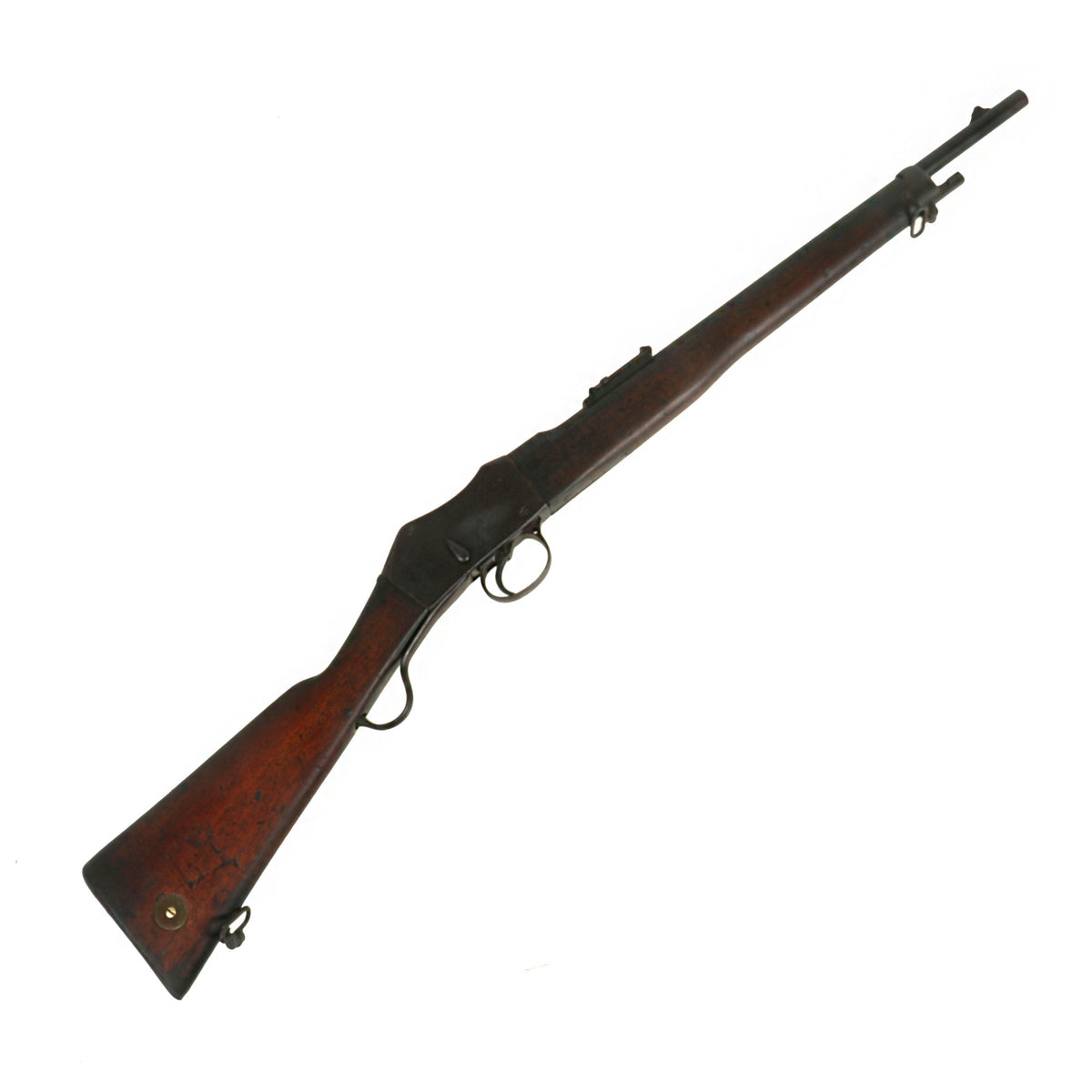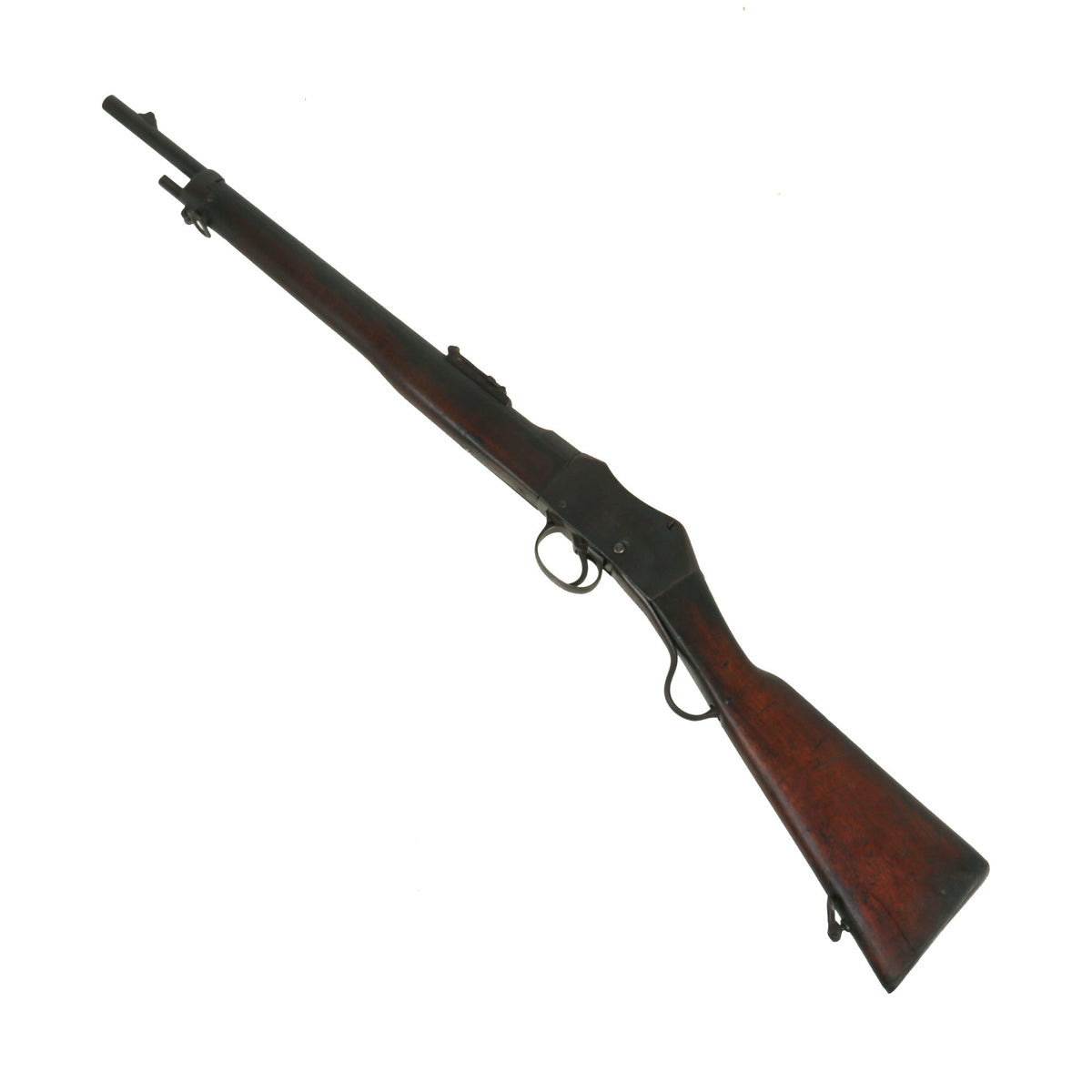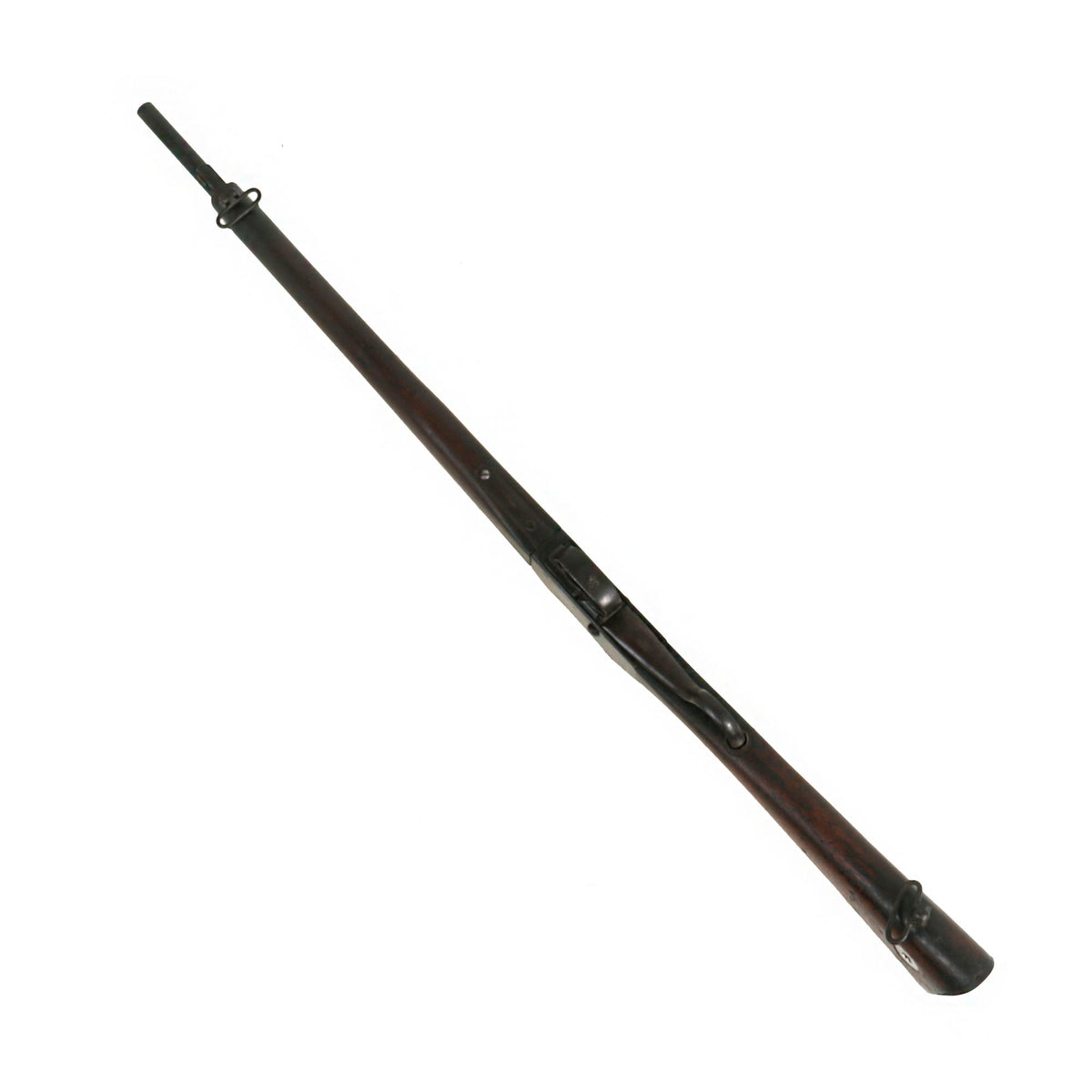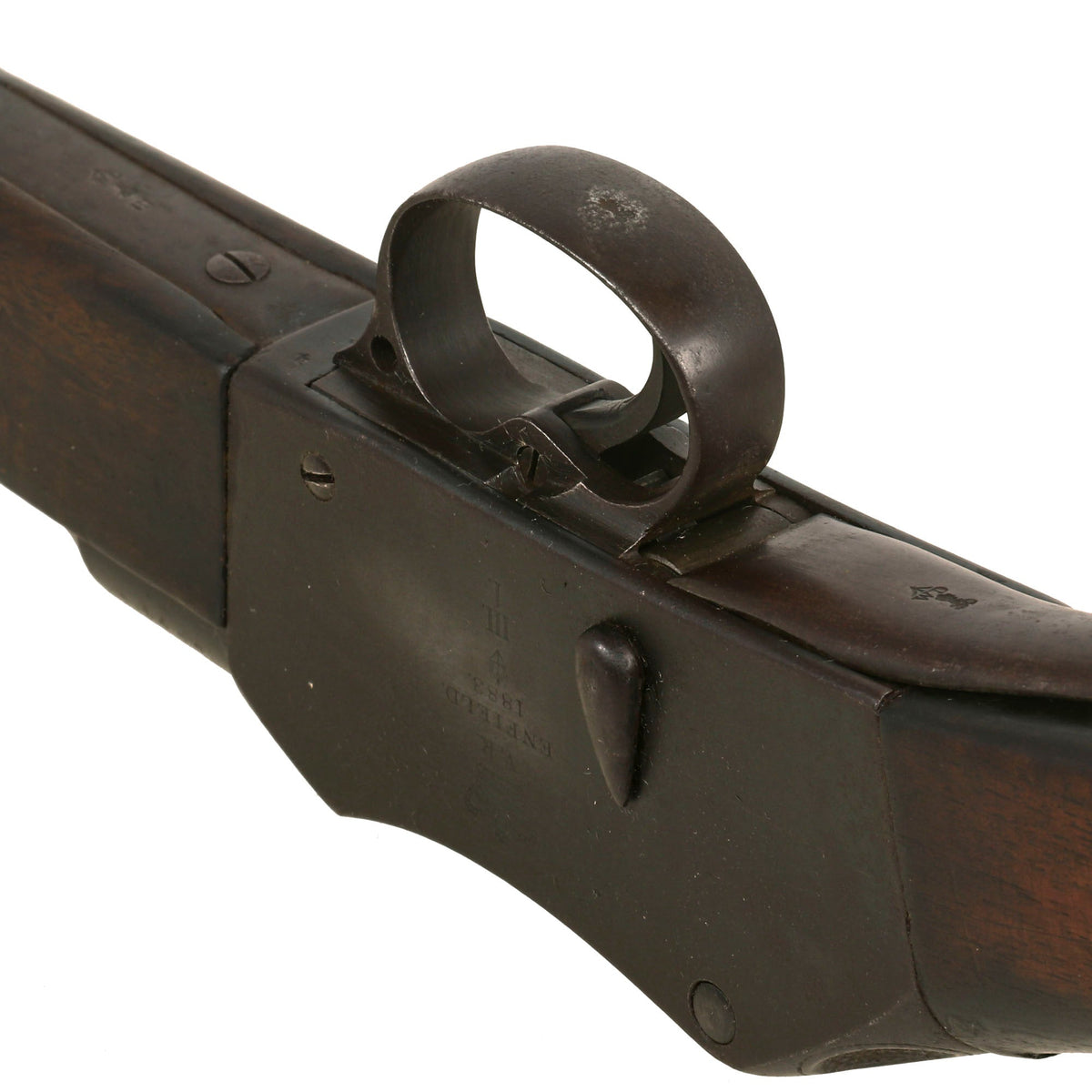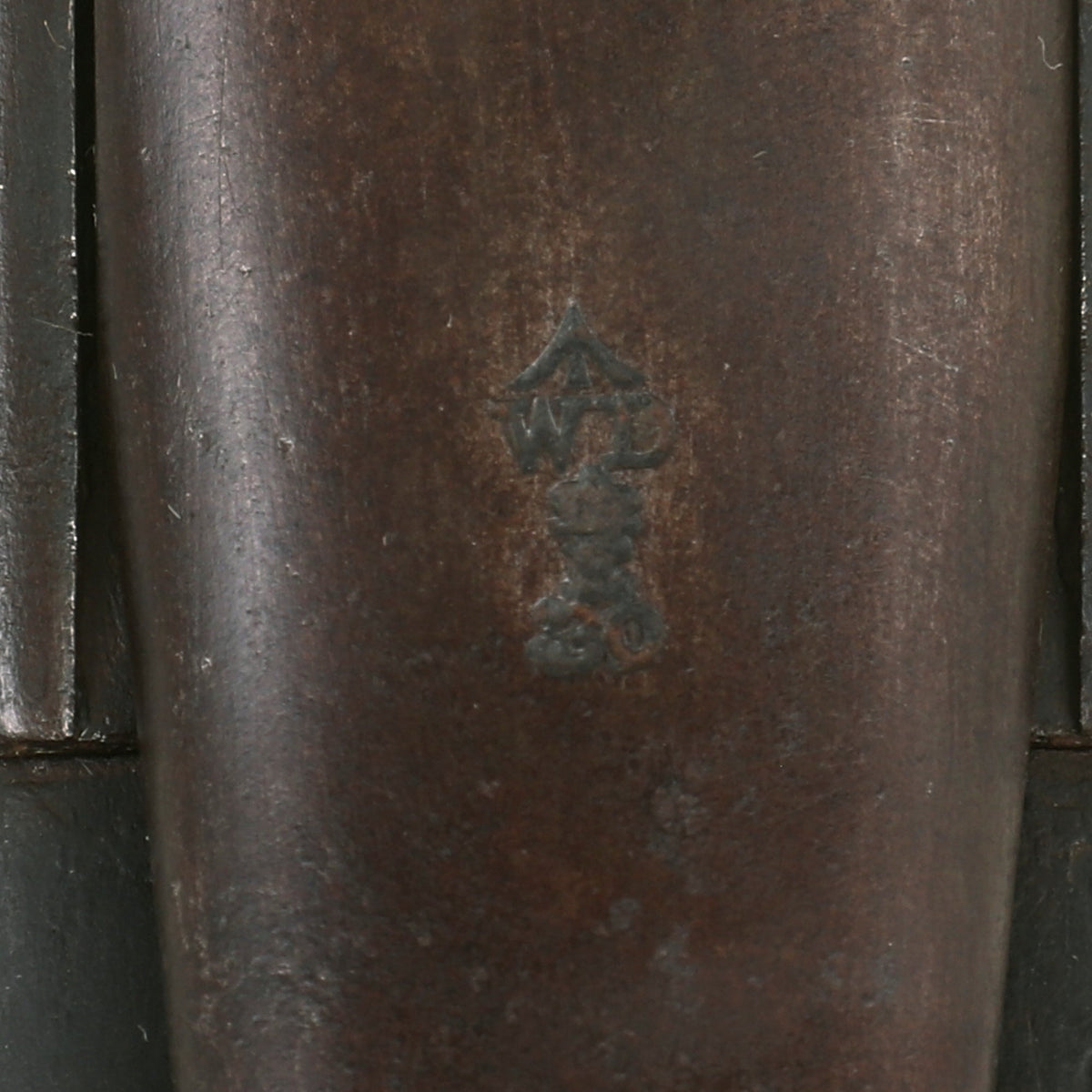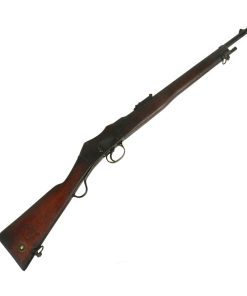Original British Martini-Enfield .303 A.C.I. Artillery Carbine by R.S.A.F. Enfield Dated 1883 and converted 1897 Original Items
$ 1.895,00 $ 473,75
Original Item: Only One Available. The Martini-Enfield Mk I was effectively a Martini-Henry Mk III rebarrelled to .303 and with a new extractor installed, whilst the Martini-Enfield Mk II rifles were generally of new manufacture- although there are examples of converted Mk II rifles.
Originally (from 1889) Martini-Henry conversions used Metford rifled barrels (and were known as Martini-Metford rifles), which were more than suitable for the first .303 cartridges, which used black powder as a propellant, but they wore out very quickly when fired with cordite/nitrocellulose cartridges (introduced in 1895) and so in 1895 the Enfield rifled barrel was introduced, which was much more satisfactory and suitable for use with “modern” (smokeless) ammunition.
The Martini-Enfield was in service from 1895-1918 (Lawrence of Arabia’s Arab Irregulars were known to have used them during the Arab Revolt of 1916-1918, along with any other firearms they could acquire), and it remained a Reserve Arm in places like India and New Zealand until well into World War II.
Martini-Enfield rifles were manufactured/converted by:
– R.S.A.F. (Royal Small Arms Factory), Enfield Lock
– L.S.A. Co (London Small Arms Co)
– B.S.A. & M Co (Birmingham Small Arms & Metals Co, later simply BSA)
– H.R.B. Co. (Henry Rifle Barrel Co, later went out of business and taken over by Blenheim Engineering)
– N.A.&A. Co (National Arms & Ammunition Co)
The original manufacturer information, would be stamped onto the right side of the action, while the left side would have information regarding the conversion. This example is marked on the right action with original maker information:
(Crown)V.R.ENFIELD1883(Viewer Mark)III.
1.
The left side is marked with the conversion information:
(Crown)
V.R.
ENFIELD
1897
(Viewer Mark)
M.E. ‘303.
A.C.I.
This started life in England as a .577/.450 Martini MARK III in 1881, made by the Royal Small Arms Factory at Enfield Lock, just in time for the Egyptian campaign and the Battle of Tel-el-Kabir in 1884. In 1897, again at RSAF Enfield in England, it was reconfigured into a Carbine and was converted to .303 caliber as an M.E. Mark I. It still has the original ENFIELD stock rondel on the right side of the butt stock. This carbine very possibly served in the First World War, in a reserve capacity and probably Home Guard Service in WW2. When company director Christian Cranmer was a boy in the 1950s, England appeared to be awash with these, but at that time Napoleonic Flintlocks were plentiful too. How things have changed!
In very nice condition this model saw service in throughout the British colonies, it is fitted to accept the P-1888 Lee Metford knife bayonet to attach directly under the barrel. The action still works correctly, with a strong dry fire and the .303 ejector still presenting correctly. The bore is in very good condition, showing strong lands and grooves and a partly bright finish. There is definitely some fouling and oxidation in the grooves, as expected for a carbine that may have seen use with black powder from left over supplies.
The stocks are in very good condition, showing a lovely color and no major damage or other issues, just the usual wear from use and long service. There is some staining along the metalwork, not uncommon due to exposure to long term moisture from condensation on the barrel.
A wonderful piece of British and Firearms history! Ready to research and display!
Specifications-
Year of Manufacture: 1883 – converted 1897
Caliber: .303 British
Cartridge Type: Centerfire Cartridge
Overall Length: 21 Inches
Overall Length: 37 Inches
Action type: Falling-Block
Feed System: Single Shot
Fast Shipping with Professional Packaging
Thanks to our longstanding association with UPS FedEx DHL, and other major international carriers, we are able to provide a range of shipping options. Our warehouse staff is expertly trained and will wrap your products according to our exact and precise specifications. Prior to shipping, your goods will be thoroughly examined and securely secured. We ship to thousands clients each day across multiple countries. This shows how we're dedicated to be the largest retailer on the internet. Warehouses and distribution centres can be located throughout Europe as well as the USA.
Note: Orders with more than one item will be assigned a processing date depending on the item.
Before shipping before shipping, we'll conduct a thorough inspection of the items you have ordered. Today, the majority of orders will be delivered within 48 hours. The delivery time will be between 3-7 days.
Returns
The stock is dynamic and we cannot completely manage it because multiple stakeholders are involved, including our factory and warehouse. So the actual stock may alter at any time. It's possible that you may not receive your order once the order has been made.
Our policy is valid for a period of 30 days. If you don't receive the product within 30 days, we are not able to issue a refund or an exchange.
You can only return an item if it is unused and in the same state as the day you received it. You must have the item in its original packaging.
Related products
Uncategorized
Uncategorized
Australian WWII Owen MK1 Machine Carbine SMG Custom Fabricated Replica with Sling Original Items
Uncategorized
Armored Burgonet Helmet & Polearm from Scottish Castle Leith Hall Circa 1700 Original Items
Uncategorized
Uncategorized
Uncategorized
Uncategorized
Uncategorized
Uncategorized
Uncategorized
Uncategorized
Uncategorized
Uncategorized
Uncategorized
Uncategorized
Uncategorized
